We’ve established that the less ingredients you include in a dish, the lower the carbohydrates would be. With that in mind, and in the given situation, we have been consuming meat alternately with these 3 Filipino soup bases. It’s anyway spring where we are, but sometimes it still feels like winter (which is sadly dragging a bit on). With less trips to the grocery stores, it’s not easy to cook dishes with all the add-ons, so these recipes are good as is, but we will also include the usual ingredients list.
Nilaga (Slow-cooked Beef Soup)
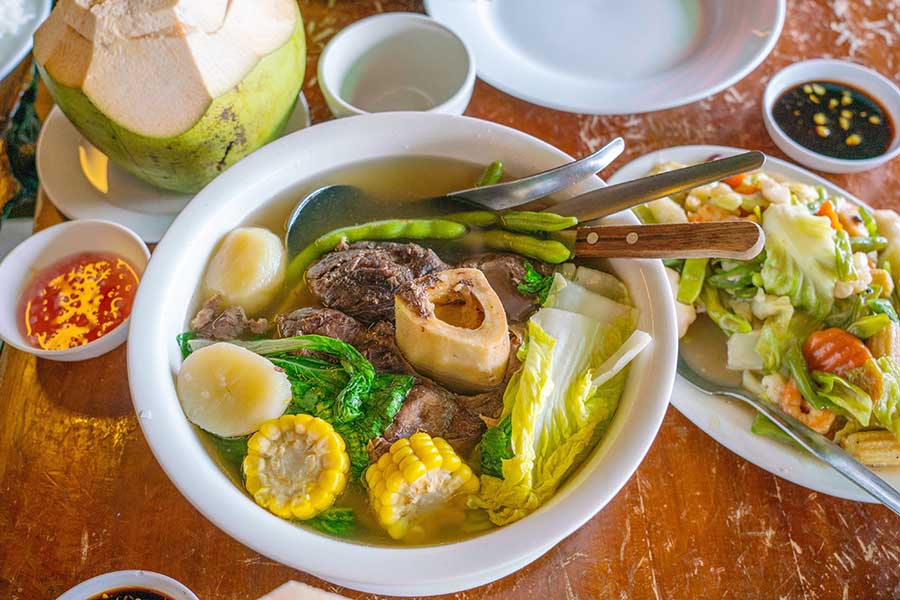
Usually cooked with beef and bone marrow or beef shank. Using our bone broth recipe, this dish would automatically be on the menu for the day when we stock bone broth (previous post). After putting broth in jars, there will be enough left for beef soup. We usually put in the marrow bones from making the broth as well.
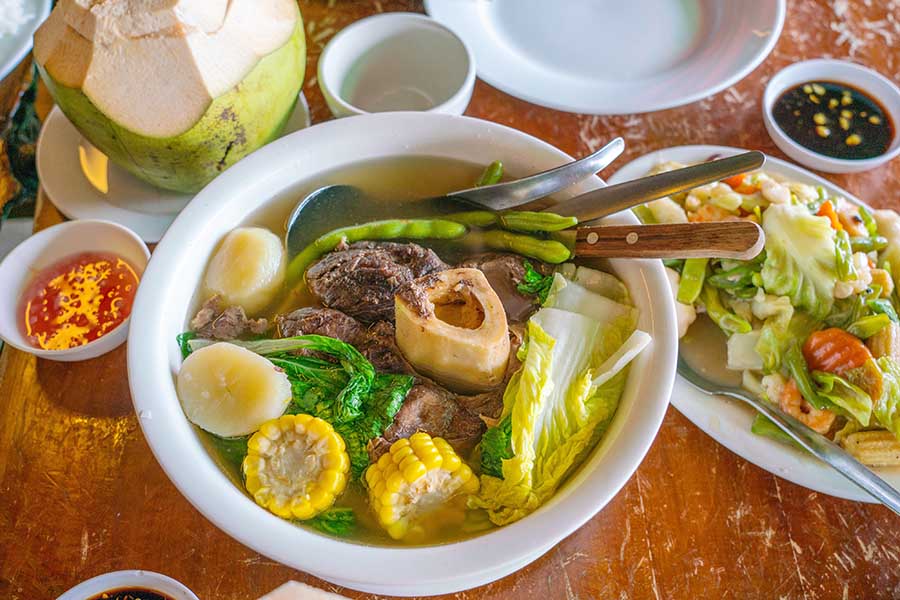
Ingredients
Equipment
Method
- Put water, shanks, and peppercorns (to tenderize meat) in your pressure cooker. Cook for 1 hour on medium heat with the lid affixed.
- Once ok to remove the lid, do so and transfer the broth to a stockpot while straining it to remove scum, bones, and peppercorns.
- Put the beef shank in the stockpot with broth. Also put in onion, homemade broth and fish sauce. If you don't have homemade broth, use beef bouillion. Simmer to a boil.
- If you got the other ingredients like corn, potatoes, and plaintain, put them into the pot. Simmer until the plantains are tender. Skip this step if you don't have them. Put the pak choi and turn off stove.
- Season with salt and pepper according to taste.
Variations
You can include pak choi or napa cabbage to keep this dish lowcarb. Putting in potatoes, plaintain and corn will increase carbohydrate content so keep those out.
Nilagang Baboy (pork)
Nilaga can be cooked with pork meat. It takes less cooking time as pork are easier to cook than beef. For the pork version, saute the onions along with the pork first before pouring in water, this method draws out the flavor of the pork. Use pork bouillon for the flavor. You can replace the plantain with squash when cooking nilagang baboy.
Nilagang Manok (chicken)
For the chicken version, use chicken bouillon. You can cook this the same as the beef method starting from number 3. You can remove the peppercorns as well.
—
Sinigang (Sour soup)
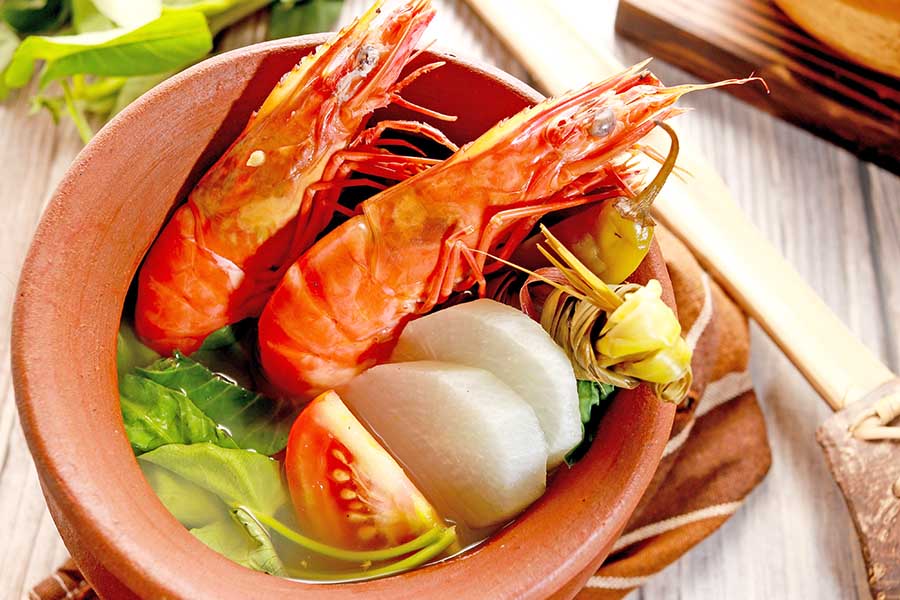
Usually cooked with pork but we prefer prawns. Sinigang is much different from the more popular Thai soup, Tom Yum although both tagged as sour soup. Sinigang could also be spicy per preference. This could be achieved by mashing chili peppers into fish sauce and added into the soup.
Sinigang’s sour taste comes from tamarind, but it could also be from guava, miso, and calamondin. Making the base is ideal if from fresh fruits of these three mentioned, but there are ready-made powder mix of their flavors.
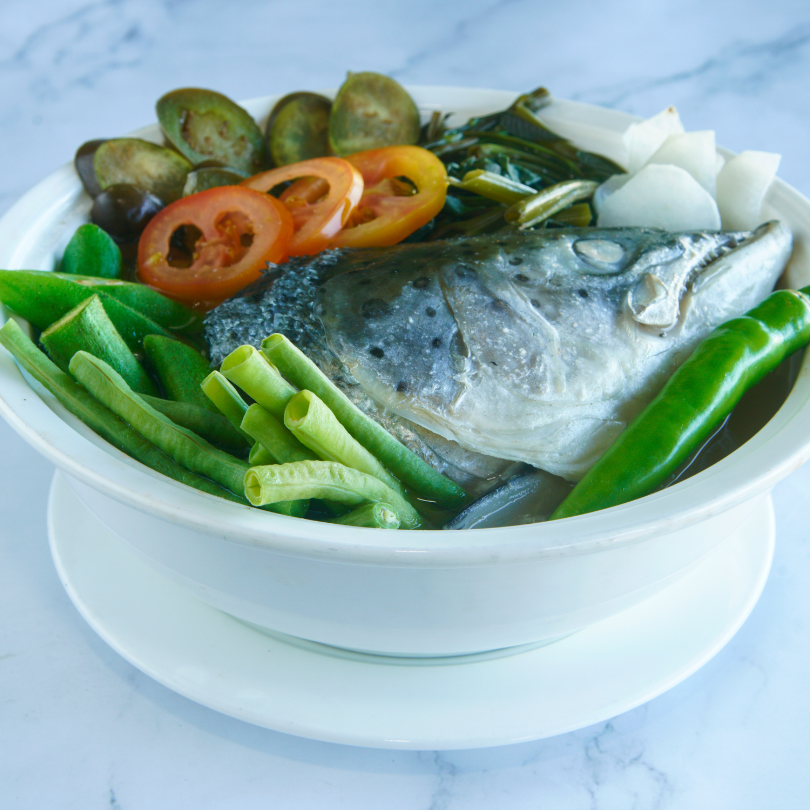
Ingredients
Equipment
Method
- In a stockpot, boil water. Add tomatoes, onions, and radish (if you have them). Simmer for 5 minutes.
- Add green peppers, sinigang mix, okra, and green beans. Put in the prawns. Cook for 5 minutes or until the vegetables and prawns are cooked through.
- Season the stock with fish sauce and adjust according to your preference.
- Add water spinach and turn off the stove. Cooking it off with the heat.
Variations
Sinigang na Baboy
The most loved among Sinigang varieties, Sinigang na Baboy is made with tender pork cuts, typically ribs or belly, simmered in a tangy tamarind broth. It’s enriched with fresh vegetables like kangkong (water spinach), radish, eggplant, and string beans, delivering a hearty and flavorful dish beloved for its comforting and zesty taste.
Sinigang na Baka
This variation features beef, often using cuts like shank or short ribs, simmered until tender in a sour tamarind-based broth. The rich flavor of the beef pairs perfectly with the tangy soup, complemented by vegetables such as tomatoes, radish, okra, and water spinach, creating a warm and satisfying dish.
Sinigang na Salmon
A delightful seafood version, Sinigang na Salmon combines the delicate, buttery flavor of salmon with the sharp tang of miso. Fresh vegetables like water spinach, radish, and tomatoes enhance the dish, making it a light yet flavorful take on the traditional sour soup.
Seafood Sinigang
A medley of seafood such as shrimp, fish, squid, and mussels come together in this sour tamarind soup. The fresh seafood flavors blend beautifully with the tangy broth and vegetables like okra, string beans, and radish, offering a refreshing and savory dish perfect for seafood lovers.
—
Tinola (Chicken in Fish Sauce and Ginger Broth)

Usually cooked with chicken. Tinola is next to the most often cooked soup at home. First is still from chicken, the regular soup that’s good for colds.
Since the usual chayote or green papaya is not easily available in our region, we have kohlrabi as substitute. Kohlrabi or german tulip, not a tulip per se, is more related to cauliflower and broccoli. Its bulb has the same texture of a chayote.
Another unusual add-on that I don’t usually find around here is moringa leaves and pepper leaves, thus, we use spinach instead.
Tinola is a comforting dish perfect for any occasion, especially during cold weather or when you’re craving a hearty meal.
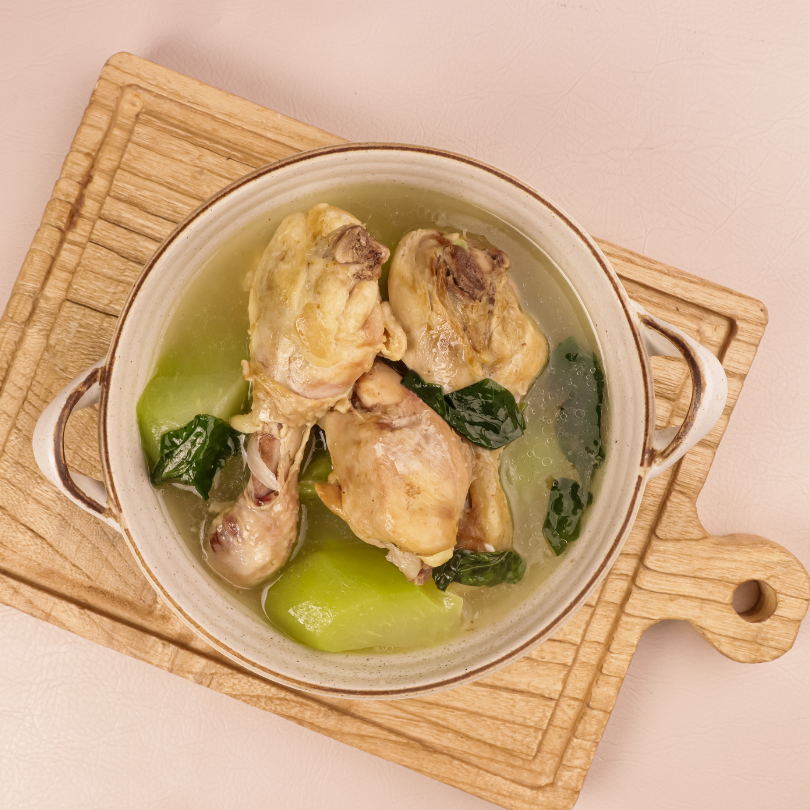
Ingredients
Equipment
Method
- Instructions:1. Wash the chicken pieces thoroughly and pat them dry with paper towels.Peel the green papaya or chayote, remove the seeds, and cut them into cubes.Slice the ginger thinly.Mince the garlic cloves. Peel and slice the onion.2. In a large pot, heat the cooking oil over medium heat.Add the minced garlic and sliced ginger. Sauté until fragrant, about 1-2 minutes.Add the sliced onion and cook until translucent.3. Add the chicken pieces to the pot. Stir and cook until they start to brown slightly, about 5-7 minutes.4. Pour in the water or chicken broth, making sure the chicken is fully submerged.Bring the mixture to a boil, then lower the heat to a simmer. Cover the pot and let it cook for about 20-25 minutes or until the chicken is tender.5. Once the chicken is tender, add the cubed green papaya or chayote to the pot.Season with fish sauce (patis), salt, and pepper according to your taste.If you want extra heat, add some bird's eye chili (siling labuyo) at this point.6.Let the soup simmer for another 8-10 minutes or until the vegetables are tender but still slightly crisp.7. Add the spinach or chili leaves to the pot. Stir gently and cook for another 1-2 minutes until the leaves are wilted.8. Taste the soup and adjust the seasoning if necessary by adding more fish sauce, salt, or pepper according to your preference.Once everything is cooked and seasoned to your liking, remove the pot from the heat.
3 Filipino Soup Bases (Summary)
Nilaga (Boiled Soup Base)
-
- Description: A clear, comforting soup base made by simmering meat (usually beef or pork) with aromatics like onions, peppercorns, and sometimes garlic. Vegetables such as cabbage and green beans are commonly added.
- Low-Carb Adaptation: Focus on low-carb vegetables like cabbage, pechay (bok choy), and radish. Avoid starchy additions like potatoes or corn. Use beef shank or pork belly for added richness.
Sinigang (Sour Soup Base)
-
- Description: Known for its tangy and savory flavor, this soup is traditionally made with tamarind as the souring agent, though calamansi or green mango can also be used. It often includes pork, beef, fish, or shrimp, with a variety of vegetables.
- Low-Carb Adaptation: Stick to low-carb vegetables such as kangkong (water spinach), radish, eggplant, and string beans. Avoid root vegetables like gabi (taro) or other high-carb options. Use fatty meats or fish for extra satiety.
Tinola (Ginger Broth Soup Base)
-
- Description: A light and aromatic soup base made from ginger, garlic, and onions, typically paired with chicken. It’s often cooked with green papaya and malunggay (moringa leaves).
- Low-Carb Adaptation: Replace green papaya with chayote or upo (bottle gourd), both of which are low-carb alternatives. Keep the malunggay leaves or substitute with spinach for added nutrients.
These three soup bases are not only flavorful but also highly adaptable to a low-carb diet by carefully selecting vegetables and focusing on protein-rich ingredients.
|
|
|




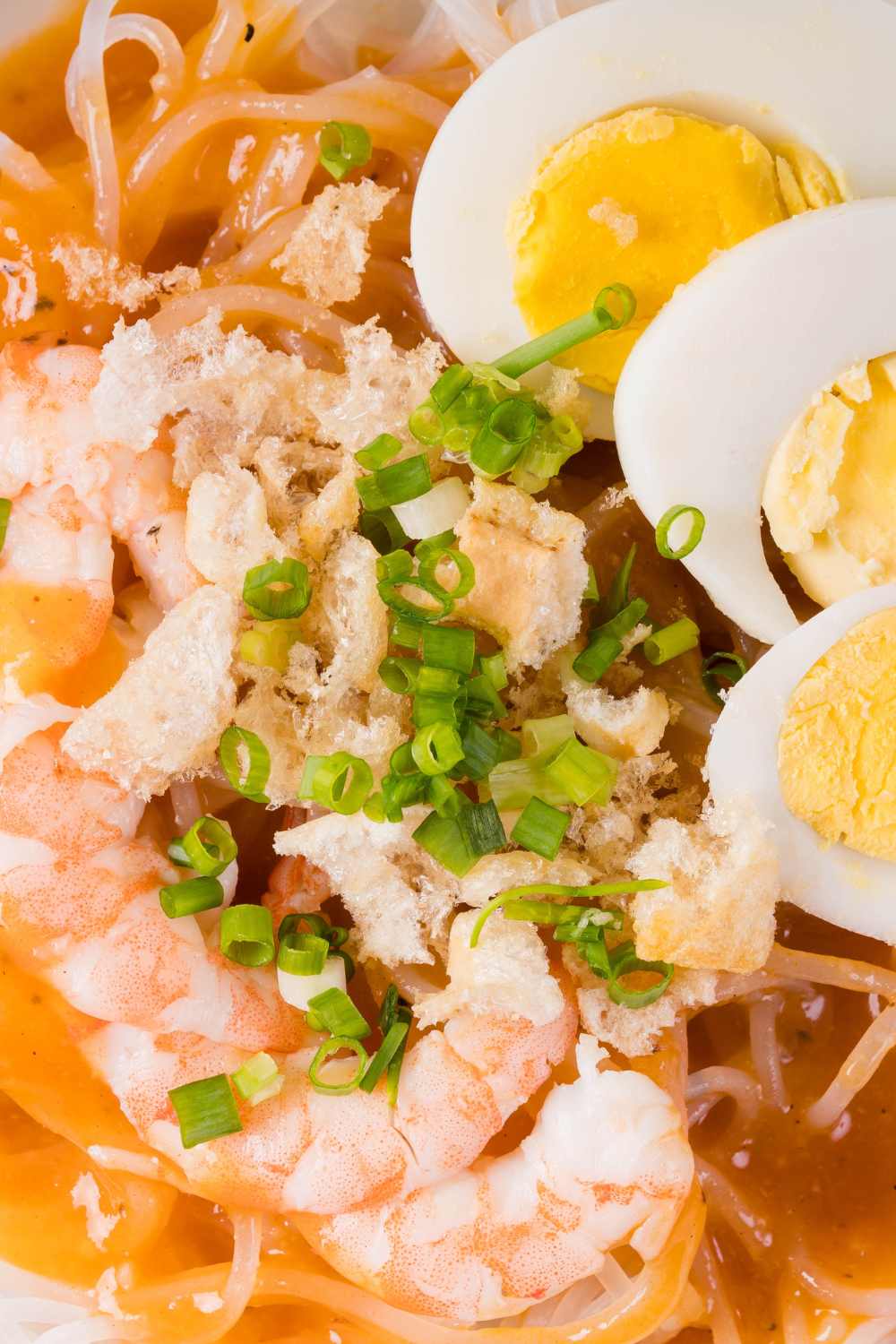



Yum yum! I grew up on all of these dishes. My dad still makes them whenever we visit for the weekend or holidays. It’s hard to pick a favorite as all three is delicious in their own right. But I will say sinigang is something I will never tire of!
Maureen | https://www.littlemisscasual.com
This Filipino soup base guide is helpful. It’s great to have a go-to for making these dishes at home.
One of my 2025 goals is to release and keep off at least 5 Kilograms. I’ve heard going low-carb helps, also is also with blood sugar, so your post is right on time! I also love Asian cooking, but moving away from Chinese – which is all I knew.
New blog reader here. Saving this recipe.
I have tried a few Filipino soups and they taste so yummy. A couple of these on the list are new to me and look yummy, will save this list to try them.
Our family made the Nilagang Manok soup for dinner and it turned out sooooo good! Savory and very comforting to enjoy!
Wow! These Filipino soups are all delicious and look so easy to make.
I can’t wait to try these soups at home. Yum!